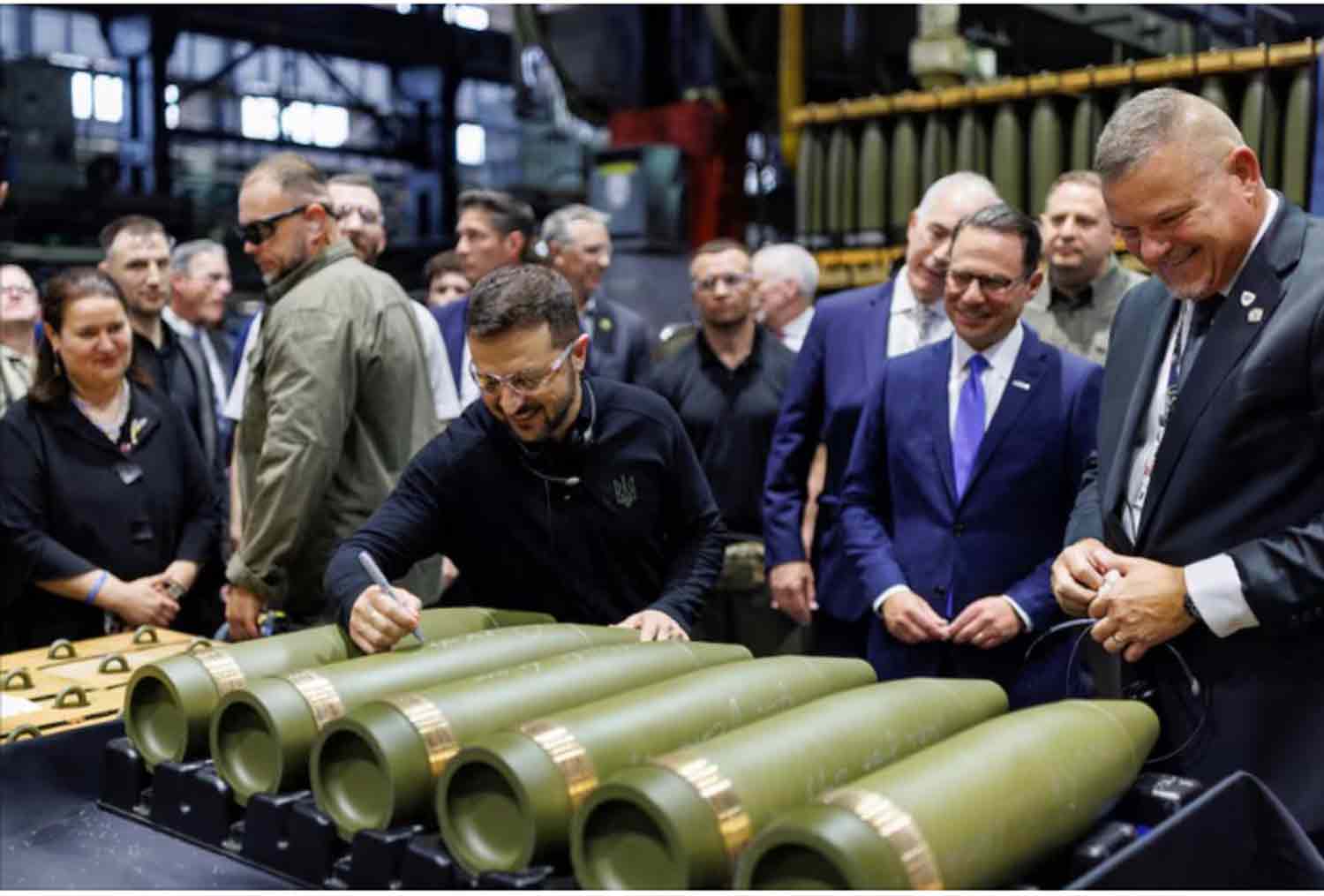Ukrainian President Volodymyr Zelenskiy is set to visit the United States this week to present a “victory plan” aimed at influencing U.S. policy regarding the ongoing conflict with Russia, regardless of the outcome of the upcoming elections in November. During his trip, Zelenskiy intends to share this plan with President Joe Biden, as well as potential successors Kamala Harris and Donald Trump, while also addressing the U.N. General Assembly on Tuesday.
Zelenskiy has expressed that Western support for the plan could significantly affect Moscow, potentially creating a psychological impact that might encourage Russian President Vladimir Putin to seek a diplomatic resolution to the war. “The Victory Plan outlines immediate and tangible actions for our strategic partners to take from now until the end of December,” Zelenskiy stated to the press on Friday. He further noted that the plan would serve as a “bridge” to a second peace summit led by Ukraine, which Kyiv hopes to organize and extend an invitation to Russia later this year.
Zelenskiy has emphasized that there is no substitute for peace, stating that “no freezing of the war or any other manipulations would merely delay Russian aggression to a later stage.” However, significant differences persist between the two parties.
Zelenskiy seeks Ukraine’s membership in NATO and the European Union, as well as the complete withdrawal of Russian forces from Ukrainian territory, although he believes the latter goal can be pursued through diplomatic means. In contrast, Putin insists that peace negotiations can only commence if Ukraine relinquishes control of large areas in the east and south to Russia and abandons its NATO aspirations.
critical moment
Zelenskiy’s visit occurs at a critical moment for Ukraine. A potential victory for Trump in the upcoming presidential election on November 5 could lead to a shift in U.S. policy towards Ukraine, which heavily depends on American military and financial assistance.
During a televised debate, Trump did not clarify whether he supports Ukraine in its fight against Russia, stating that he would aim to end the conflict before assuming office if he wins. Harris accused Trump of advocating for Ukraine’s rapid and unconditional surrender.
As the election approaches, Kyiv has demonstrated its military capabilities, swiftly capturing territory during a high-risk incursion into Russia’s Kursk region on August 6, showcasing new weaponry, including a “drone missile” and ballistic systems, and executing significant drone strikes. One such strike resulted in a substantial explosion at an ammunition depot in Russia’s Tver region last Wednesday.
In response, Russia has intensified its drone and missile assaults, reportedly received Iranian ballistic missiles, increased its military personnel, sought to revise its nuclear strategy, and escalated its offensive in the east.
U.S. National Security Adviser Jake Sullivan has indicated that President Biden is keen to engage in discussions regarding President Zelenskiy’s “comprehensive strategy for success in this war” against Russia. Zelenskiy has outlined that his plan is concise and emphasizes that “all these points depend on Biden’s decision, not Putin’s.”
On Friday, he elaborated on the steps involved, which include defining Ukraine’s role within the global “security architecture,” making battlefield decisions such as the Kursk operation, enhancing Ukraine’s military capabilities, and supporting the national economy.
Ukrainian military analyst Oleksandr Kovalenko noted that Zelenskiy may advocate for long-term assurances of assistance extending into 2025 and seek a declaration ensuring continued support beyond Biden’s presidency. “This will be a very important moment. Perhaps in some ways, in a political and military-political sense, it will be a pivotal moment,” he remarked.
Zelenskiy is likely to reiterate his request for Biden to authorize long-range strikes into Russia, a move that Moscow has warned would implicate NATO members directly in the conflict and provoke a response. Ukraine aims to target military facilities up to 300 km (186 miles) within Russian territory, including airfields that host attack helicopters and warplanes responsible for launching glide bombs. However, Washington has stated that it does not view the relaxation of these restrictions as a significant shift on the battlefield.
Currently, Russia occupies 18% of Ukrainian territory and has been on the offensive since last October, achieving its most rapid advances in August. Ukraine’s foothold in Russia’s Kursk region could potentially serve as leverage in negotiations or as a safeguard against any external attempts to freeze the conflict at its current state. Nevertheless, Kyiv must maintain control of the territory while facing significant manpower challenges against a much larger adversary.
In the meantime, Russia is making strides toward the transport hub of Pokrovsk, and its capture could severely disrupt Ukrainian logistics and create new avenues for attack.
Kovalenko indicated that Russia is likely aiming to seize Pokrovsk by the end of the year. “This would enable them to intensify their influence on the information front, potentially prompting discussions about peace negotiations, albeit on their own terms,” he remarked.
Ukraine is looking to present a peace framework at a second international summit later this year, with Russia expected to be invited at the behest of other attendees. The initial summit held in Switzerland notably excluded Moscow in June, and both China and several nations from the Global South chose not to participate.
Zelenskiy asserts that his summit initiative represents the only feasible path to peace and criticized a Chinese-Brazilian proposal this month as “destructive,” as it advocates for “de-escalating the situation” and resuming direct dialogue without necessitating a Russian withdrawal.
As Ukraine braces for its most challenging winter in the ongoing 2.5-year conflict, Russian strikes have severely impacted its energy production capabilities. The government is also grappling with increasing economic difficulties and is planning its first wartime tax increases to address a funding shortfall of approximately $12.2 billion for its military this year.
Public opinion surveys present a varied landscape. As of May 2024, around 32% of Ukrainians expressed willingness to consider certain territorial concessions to conclude the war, a rise from 10% in May 2022, according to Anton Hrushetskyi, executive director of the Kyiv-based polling organization KIIS. However, most envision a scenario that would delay the return of territory rather than relinquish it permanently.
A critical requirement for any peace agreement is the assurance of robust security guarantees, such as NATO membership, he noted. “Despite the prevailing negative trends, Ukrainians remain sufficiently optimistic and aspire for a brighter future—one that they hope will be within the European Union and accompanied by adequate security assurances.”
Discover more from Defence Talks | Defense News Hub, Military Updates, Security Insights
Subscribe to get the latest posts sent to your email.






[…] to pursue peace. Zelenskiy has been actively seeking the backing of Western leaders for his “victory plan,” aimed at concluding the war that erupted following Russia’s full-scale invasion of […]